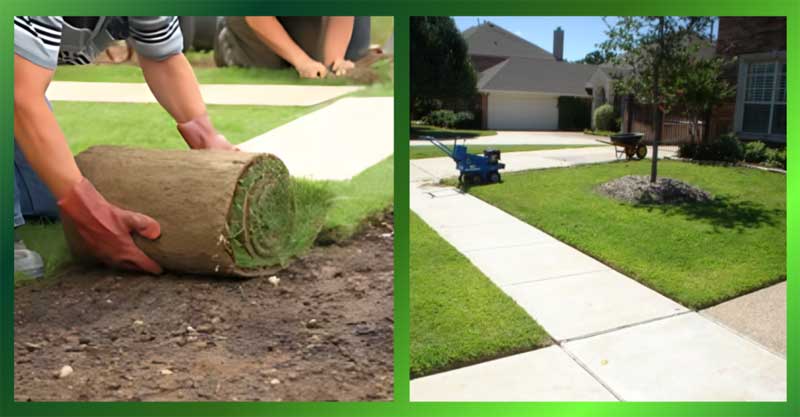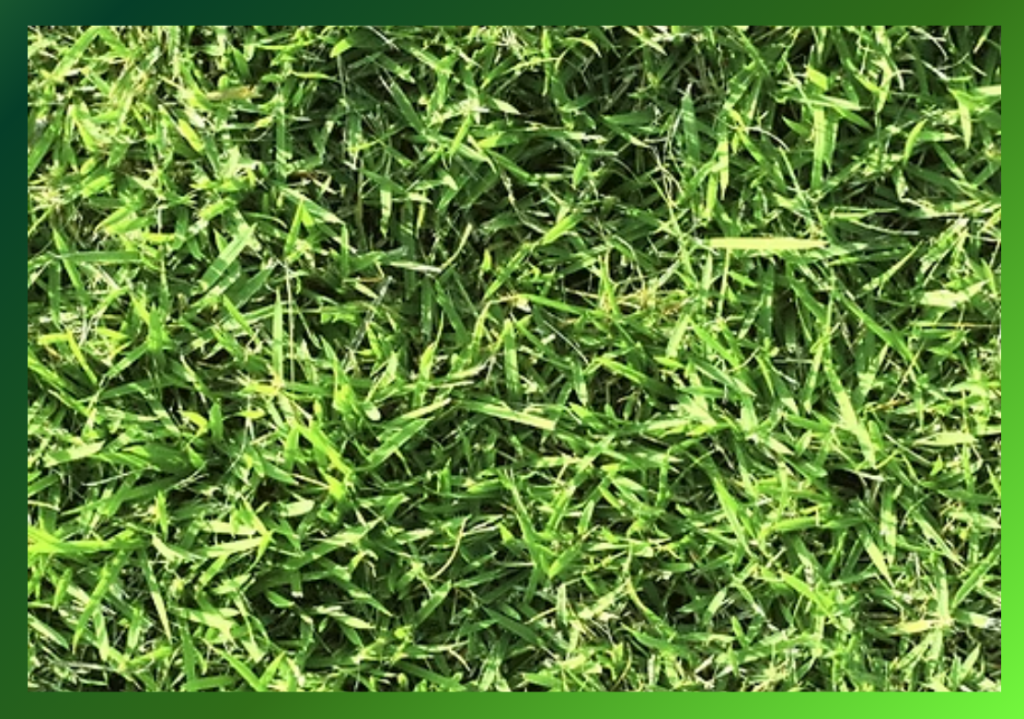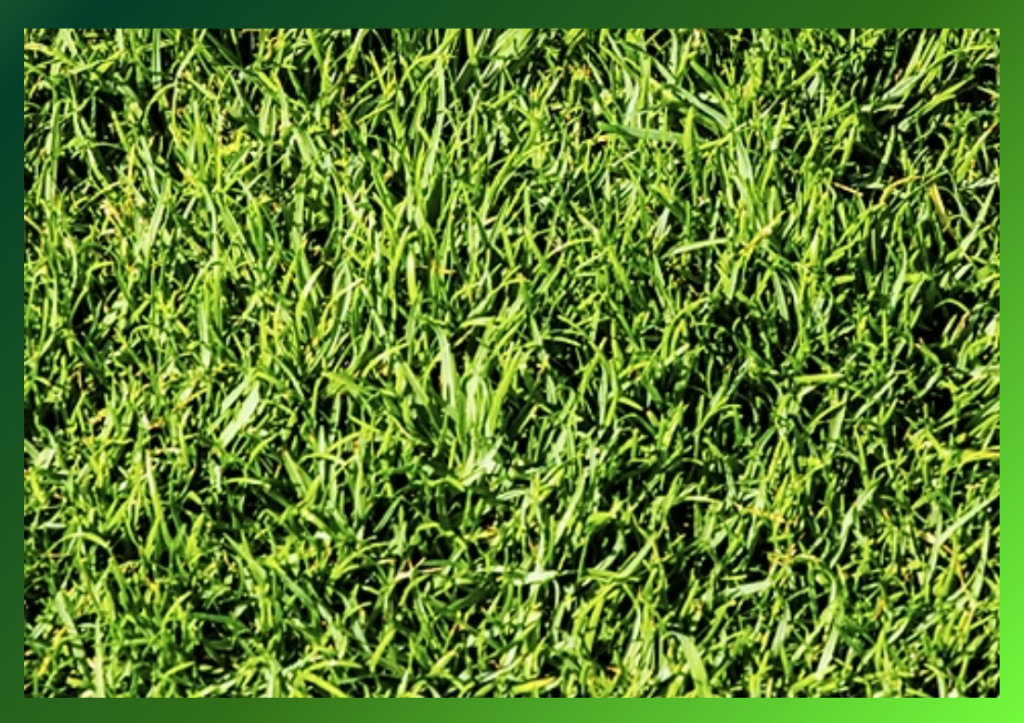The Best Time for Sod Installation
Spring and fall are ideal seasons for sod installation due to cooler temperatures and increased rainfall. While summer is also an option, it requires more frequent watering to keep new sod healthy during the hottest weeks.

Instant Beauty & Longevity with Sod
Sodding provides an instant, lush lawn without the long wait of seeding. To ensure success, watering should begin immediately after installation, thoroughly soaking both the sod and underlying soil.
Professional Sod Installation
We install sod in selected areas or across entire lawns, including re-leveling with topsoil if needed. Our installation includes:
- Ground preparation & tilling
- Adding new topsoil (if required)
- New sod installation
- Labor & delivery
Sod Varieties We Offer
We install high-quality sod varieties suited for different environments, including:
- Raleigh St. Augustine
- Tex Turf 10 Bermuda
- Tif Green 328 Bermuda
- Tif Way 419 Bermuda
Raleigh St. Augustine Grass

- Texture & Color: Medium-to-dark green with a dense, creeping growth habit
- Temperature Tolerance: Thrives in summer and withstands mild winters, though extreme cold may cause damage
- Shade Tolerance: Best shade-resistant warm-season grass; survives with 3-4 hours of sunlight daily
- Wear Resistance: Handles occasional foot traffic; recovers quickly once damage stops
- Water Requirements: Needs ½-¾ inch of water 2-3 times per week in summer
- Recommended For: Lawns with partial shade or full sun exposure
Best Varieties: Raleigh & Palmetto
Bermuda Grass

- Texture & Color: Fine to medium texture, dark green, with dense growth and strong root system
- Temperature Tolerance: Excellent heat and cold tolerance; dormant in winter but greens up fast in spring
- Shade Tolerance: Requires full sun; not suitable for shady areas
- Wear Resistance: Highly durable, withstands moderate foot traffic and recovers quickly
- Water Requirements: Survives with minimal irrigation but thrives with ½-¾ inch of water 2-3 times per week
- Recommended For: High-traffic areas, sports fields, or low-maintenance turf
Best Varieties: U-3 Select Common, TexTurf 10, Tifway 419, Celebration
Zoysia Grass

- Texture & Color: Fine-to-medium texture, deep green with a low, dense growth habit
- Temperature Tolerance: Exceptional heat tolerance with one of the best cold tolerances among warm-season grasses
- Shade Tolerance: Moderate shade resistance, second only to St. Augustine
- Wear Resistance: Highly resistant to damage but slow to recover due to slow growth
- Water Requirements: Comparable to other warm-season grasses, but ½-¾ inch of water 2-3 times per week is recommended for optimal turf quality
- Recommended For: Homes & businesses looking for a premium, durable lawn with some shade tolerance
Best Varieties: Palisades, El Toro, Emerald
Why Choose Our Sod Installation?
- Professional installation for instant, lush lawns
- Proper irrigation guidance for long-lasting results
- Top-quality sod varieties suited to different needs
- Perfect for residential & commercial landscapes
Get in touch today for expert sod installation and a greener, healthier lawn!
